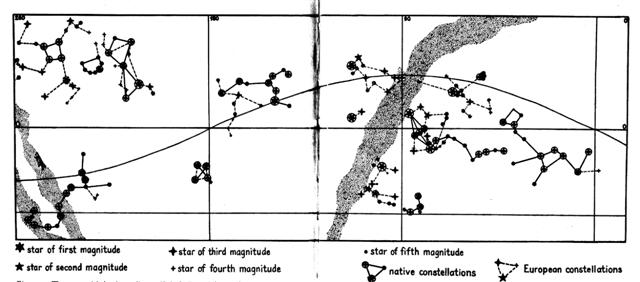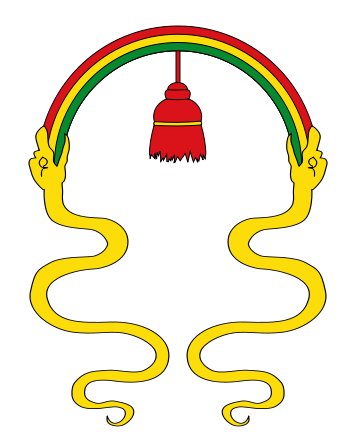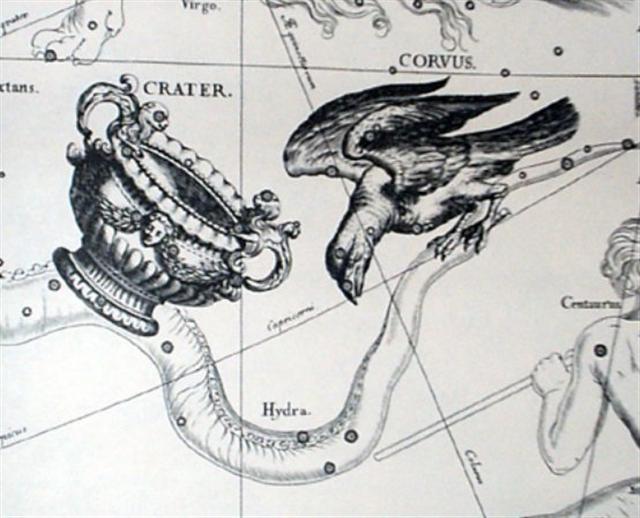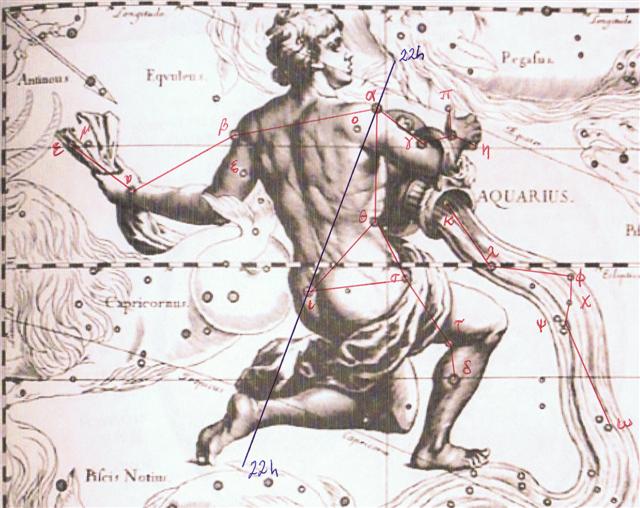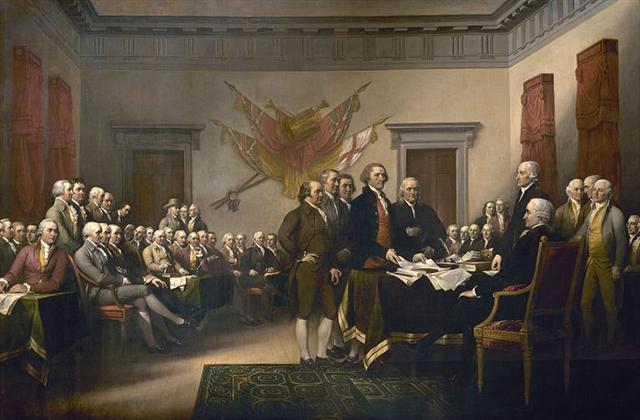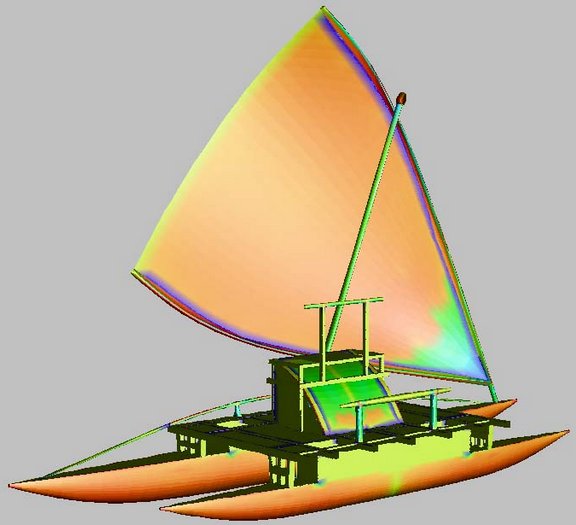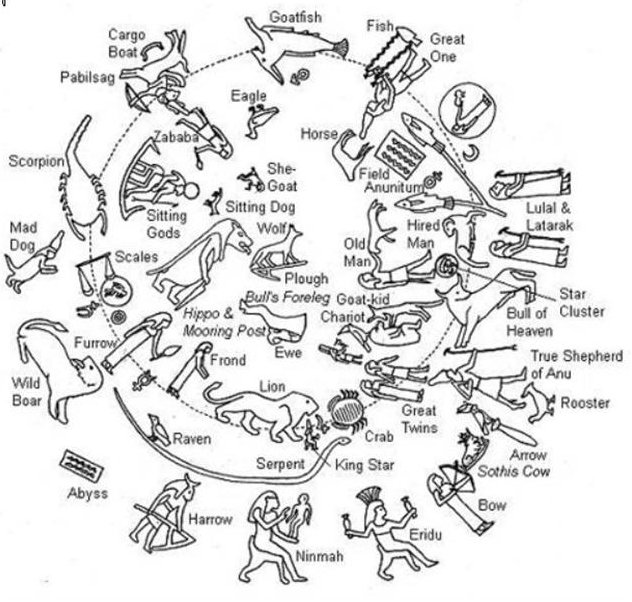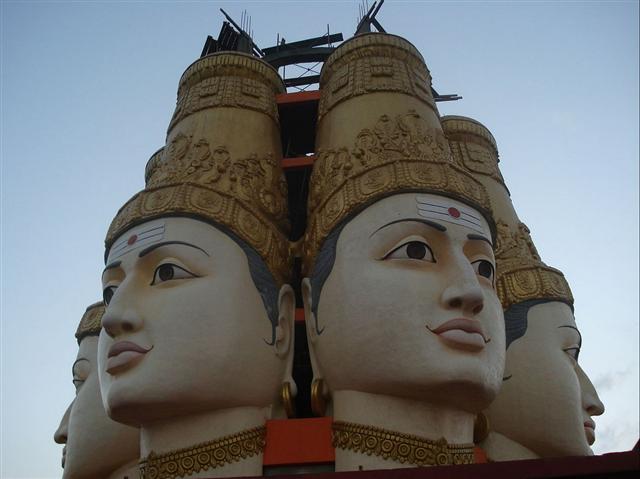The Explorers landed on Easter Island at Hanga Te Pau (the Bay of Paucity), left their ship there on the beach and went inlands with their provisions. Later they reached the Bay of Turtles - a bay of plenty:
... Again they went on and reached Hanga Hoonu. They saw it, looked around, and gave the name 'Hanga Hoonu A Hau Maka'. On the same day, when they had reached the Bay of Turtles, they made camp and rested. They all saw the fish that were there, that were present in large numbers - Ah! Then they all went into the water, moved toward the shore, and threw the fish (with their hands) onto the dry land. There were great numbers (? ka-mea-ro) of fish. There were tutuhi, paparava, and tahe mata pukupuku. Those were the three kinds of fish. After they had thrown the fish on the beach, Ira said, 'Make a fire and prepare the fish!' When he saw that there was no fire, Ira said, 'One of you go and bring the fire from Hanga Te Pau!' One of the young men went to the fire, took the fire and provisions (from the boat), turned around, and went back to Hanga Hoonu. When he arrived there, he sat down. They prepared the fish in the fire on the flat rocks, cooked them, and ate until they were completely satisfied. Then they gave the name 'The rock, where (the fish) were prepared in the fire with makoi (fruit of Thespesia populnea?) belongs to Ira' (Te Papa Tunu Makoi A Ira). They remained in Hanga Hoonu for five days ... Assuming my key for unlocking the time frame in Manuscript E which I suggested from the story of the arrival of Hotu (the Full Moon king) to the island - viz. at the time when Jupiter (Nonoma) was out urinating like Leo in the night of "July 27 - it ought be possible to locate the Bay of Turtles somewhere in the interval "July 18 - 22:
... 'The sun's rays,' he went on, 'are fire and the Nummo's excrement. It is the rays which give the sun its strength. It is the Nummo who gives life to this star, for the sun is in some sort a star.' It was difficult to get him to explain what he meant by this obscure statement. The Nazarene made more than one fruitless effort to understand this part of the cosmogony; he could not discover any chink or crack through which to apprehend its meaning. He was moreover confronted with identifications which no European, that is, no average rational European, could admit. He felt himself humiliated, though not disagreeably so, at finding that his informant regarded fire and water as complementary, and not as opposites. The rays of light and heat draw the water up, and also cause it to descend again in the form of rain. That is all to the good. The movement created by this coming and going is a good thing. By means of the rays the Nummo draws out, and gives back the life-force. This movement indeed makes life. The old man realized that he was now at a critical point. If the Nazarene did not understand this business of coming and going, he would not understand anything else. He wanted to say that what made life was not so much force as the movement of forces. He reverted to the idea of a universal shuttle service. 'The rays drink up the little waters of the earth, the shallow pools, making them rise, and then descend again in rain.' Then, leaving aside the question of water, he summed up his argument: 'To draw up and then return what one had drawn - that is the life of the world.'
... At the time of Bharani (41 precessional days earlier than the time of rongorongo) day 288 - 80 = 208 was "July 27, to which place precession had moved Zosma and Coxa since the time of the Bull - when they had been in day 185 (JULY 4) and 13 days after the solstice ...
A new fire had to be fetched from the ship which they had left on the beach in the Bay of Paucity (Hanga Te Pau). Where in the sky dome of time was this? We ought to be able to count backwards from "July 27 (JULY 4) = Tangaroa Uri 15 (288).
288 - 185 (JULY 4) = 103 and 103 - 80 = 23 = 64 - 41. ... The canoes of Ava Rei Pua and of Hotu were seen near the (off-shore) islets. On the fifteenth day of the month of October (tangaroa uri) the canoe of Hotu and the canoe of Ava Rei Pua landed. On the fifteenth day of the month of October (tangaroa uri), Nonoma left the house during the night to urinate outside. At this point Ira called out to Nonoma, 'Look at the canoe!' Nonoma ran, he quickly went to Te Hikinga Heru (a ravine in the side of the crater Rano Kau) and looked around. There he saw the double canoe way out near the (offshore) islets, and the two (hulls of the canoe) were lashed together. He ran and returned to the front of the house. He arrived and called into the house: 'Hey you! This canoe has arrived during the night without our noticing it!' Ira asked Nonoma, 'Where is the canoe, which you say is lying out there (in the water)?' Nonoma's voice came back: 'It is out there (in the water) close to the (offshore) islets! There it lies, and the two (hulls) are lashed together.' The four of them (corrected for 'the six of them') went out and picked up leaves (on branches) to give signals. They picked them up, went and arrived at Te Hikinga and saw the canoe. Raparenga got up, picked up the leaves, took them in his hands, and waved, waved, waved, waved ... Ira (the Sun) could not see the Double Canoe (with its hulls lashed together) because he ruled in daytime, not in the night. During the night he was in-visible because he was inside: ... But Osiris's evil brother, Set, whose sister-wife was the goddess Nephtys, was mortally jealous both of his virtue and of his fame, and so, stealthily taking the measure of his good brother's body, he caused a beautifully decorated sarcophagus to be fashioned and on a certain occasion in the palace, when all were drinking and making merry, had it brought into the room and jestingly promised to give it to the one whom it should fit exactly. All tried, but, like the glass slipper of Cinderella, it fitted but one; and when Osiris, the last, laid himself within it, immediately a company of seventy-two conspirators with whom Set had contrived his plot dashed forward, nailed the lid upon the sarcophagus, soldered it with molten lead, and flung it into the Nile, down which it floated to the sea ...
But he was perfectily aware of the time when the canoe of time was due to arrive.
Noteworthy is the fact that if my assumed time frame is correct, then the Explorers (Planets) would have left their old homeland in Vaitu Nui 25 = "April 25, when Cursa would have been at right ascension day *76 - *41 = *35 (= 5 weeks). Whereas at the time of Gregory XIII this place would have moved on to °June 1 = *76 - *4 = *72 (= 360 / 5) , which date appears to allude to the date when the Explorers reached Easter Island, viz. in Maro 1 = "June 1:
The implication could be that the positions of departure and arrival were determined both from the stars in the night and from the position of daytime Sun in his cycle. ... On February 9 the Chorti Ah K'in, 'diviners', begin the agricultural year. Both the 260-day cycle and the solar year are used in setting dates for religious and agricultural ceremonies, especially when those rituals fall at the same time in both calendars. The ceremony begins when the diviners go to a sacred spring where they choose five stones with the proper shape and color. These stones will mark the five positions of the sacred cosmogram created by the ritual. When the stones are brought back to the ceremonial house, two diviners start the ritual by placing the stones on a table in a careful pattern that reproduces the schematic of the universe. At the same time, helpers under the table replace last year's diagram with the new one. They believe that by placing the cosmic diagram under the base of God at the center of the world they demonstrate that God dominates the universe. The priests place the stones in a very particular order. First the stone that corresponds to the sun in the eastern, sunrise position of summer solstice is set down; then the stone corresponding to the western, sunset position of the same solstice. This is followed by stones representing the western, sunset position of the winter solstice, then its eastern, sunrise position. Together these four stones form a square. They sit at the four corners of the square just as we saw in the Creation story from the Classic period and in the Popol Vuh. Finally, the center stone is placed to form the ancient five-point sign modern researchers called the quincunx ...
Later on in this series of rituals, the Chorti go through a ceremony they call raising the sky. This ritual takes place at midnight on the twenty-fifth of April and continues each night until the rains arrive. In this ceremony two diviners and their wives sit on benches so that they occupy the corner positions of the cosmic square. They take their seats in the same order as the stones were placed, with the men on the eastern side and the women on the west. The ritual actions of sitting down and lifting upward are done with great precision and care, because they are directly related to the actions done by the gods at Creation. The people represent the gods of the four corners and the clouds that cover the earth. As they rise from their seats, they metaphorically lift the sky. If their lifting motion is uneven, the rains will be irregular and harmful ... The Chorti agricultural year began on February 9 and this date ought primarily to have been determined from the soon to be expected arrival of the Sun rather than from the positions of the stars in the night. Their April 25, on the other hand, could have been an important date in their 260-day cycle and possibly at Cursa. 260 - 115 = 145 = 290 / 2. The creators of Manuscript E probably decided to put a clue in form of the number of days for the Sea voyage of the Explorers, such a measure could not be arbirtrary. This clue (key) could have referred to the distance from their 'old homeland' - when Bharani was at 0h - to the time of the birth of the Gregorian calendar 37 precessional days later. If so, this would lend support to my suggestion derived from Nonoma urinating in the night, viz. that the dates in Manuscript E were referring to a calendar based on the time when Bharani was at "March 20. In the first picture below there is evidently a congruence between the positions of Bharani, Auriga, and the First Point of Aries - probably all 3 of them representing the place of Wedjat (like layers in time):
... In Hindu mythology, the god Murugan (Skanda/Subrahmanya/Kartikeya) was raised by the six sisters known as the Krttikā and thus came to be known as Kārtikeya (literally 'Him of the Krttikā'). According to the Mahābhārata, Murugan was born to Agni and Svāhā, after the latter impersonated six of the seven wives of the Saptarsi and made love to him. The Saptarshi, hearing of this incident and doubting their wives' chastity, divorced them. These wives then became the Krttikā ... ... Skanda (literally 'the jumping one' or 'the hopping one') is the planet Mars, also called Kartikeya, inasmuch as he was borne by the Krittika, the Pleiades. Mbh. 9.44-46 (Roy trans. vol. 7, pp. 130-43). It should be emphasized, aloud and strongly, that in Babylonian astronomy Mars is the only planetary representative of the Pleiades. See P. F. Gössmann. Planetarium Babylonicum (1950), p. 279: 'In der Planetenvertretung kommt für die Plejaden nur Mars in Frage.' The Mahabharata insists on six as the number of the Pleiades as well as of the mothers of Skanda and gives a very broad and wild description of the birth and the installation of Kartikeya 'by the assembled gods ... as their generalissimo', which is shattering, somehow, driving home how little one understands as yet. The least which can be said, assuredly: Mars was 'installed' during a more or less close conjunction of all planets; in Mbh. 9.45 (p. 133) it is stressed that the powerful gods assembled 'all poured water upon Skanda, even as the gods had poured water on the head of Varuna, the lord of waters, for investing him with dominion'. And this 'investiture' took place at the beginning of the Krita Yuga, the Golden Age ... But 'in reality' the description in the Hathor Temple of Dendera is different, with this '3rd Wedjat' (Mars) eye wedged in between Pisces and Aries:
How should one visualize different positions in time? Our view of the exterior world is limited to 2 dimensions. And by the introduction of the perspective in the Renaissance there certainly was no longer much room for the time dimension - here we could have lost contact with our ancient footholds in time. ... Cupping his two hands behind his ears, Ogotemmęli explained that the spirit had no external ears but only auditory holes. 'His hands serve for ears,' he said; 'to enable him to hear he always holds them on each side of his head. To tap the drum is to tap the Nummo's palms, to tap, that is, his ears.' Holding before him the web of threads which represented a weft, the Spirit with his tongue interlaced them with a kind of endless chain made of a thin strip of copper. He coiled this in a spiral of eighty turns, and throughout the process he spoke as he had done when teaching the art of weaving. But what he said was new. It was the third Word, which he was revealing to men ...
|
||||||||||||||||||||||||||||||||||||||||||||||||||||||||||||||||||||||||||||||||||||||||||||||||||||||||||||||||||||||||||||||||||||||||||||||||||||||||||||||||||||||||||||||||||||||||||||||||||||||||||||||||||||||||||||||||||||||||||||||||||||||||||||||||||||||||||||||||||||
